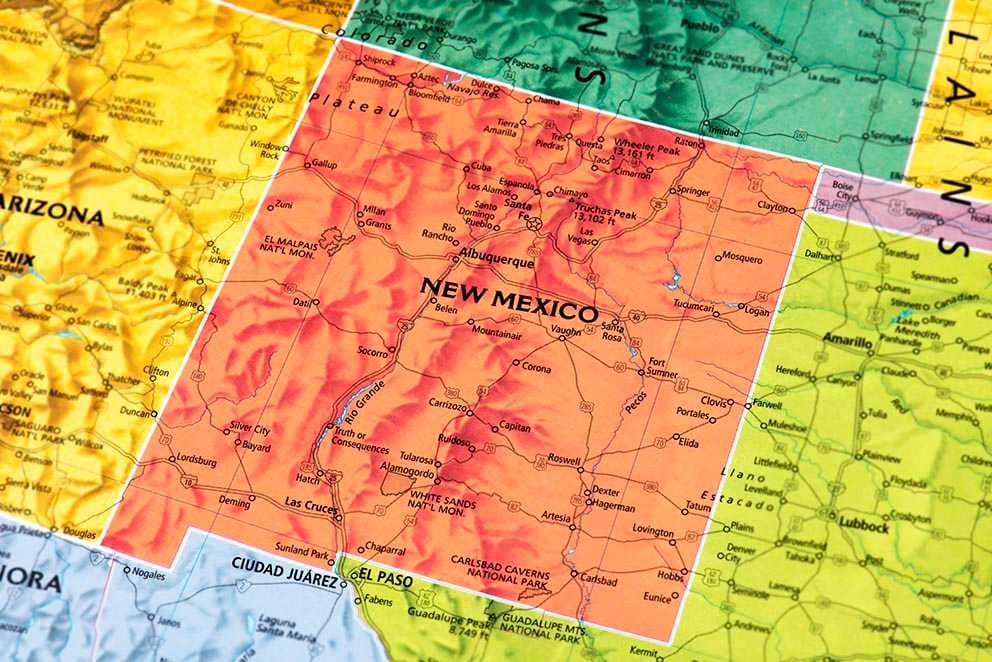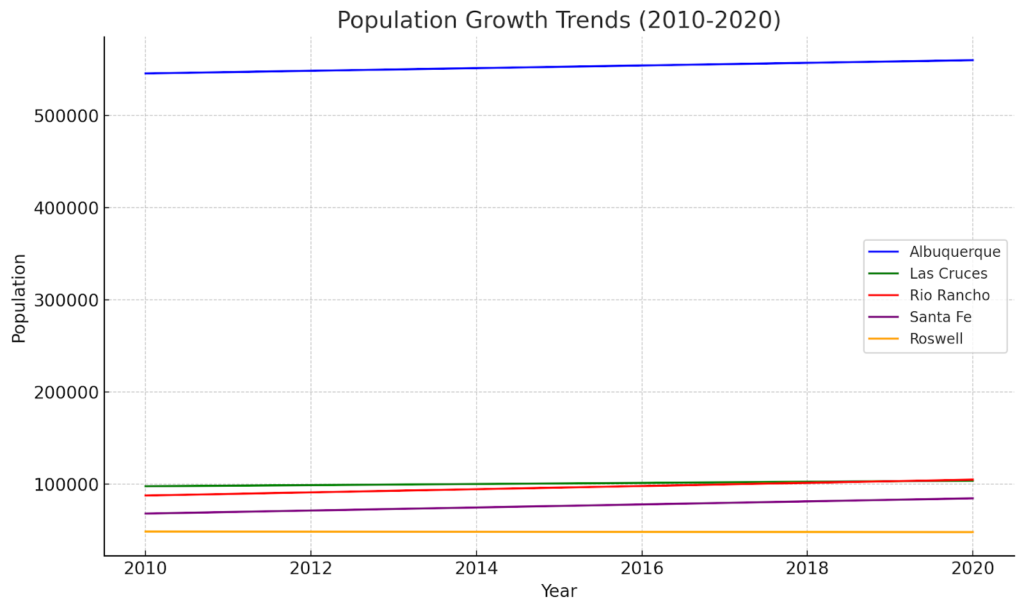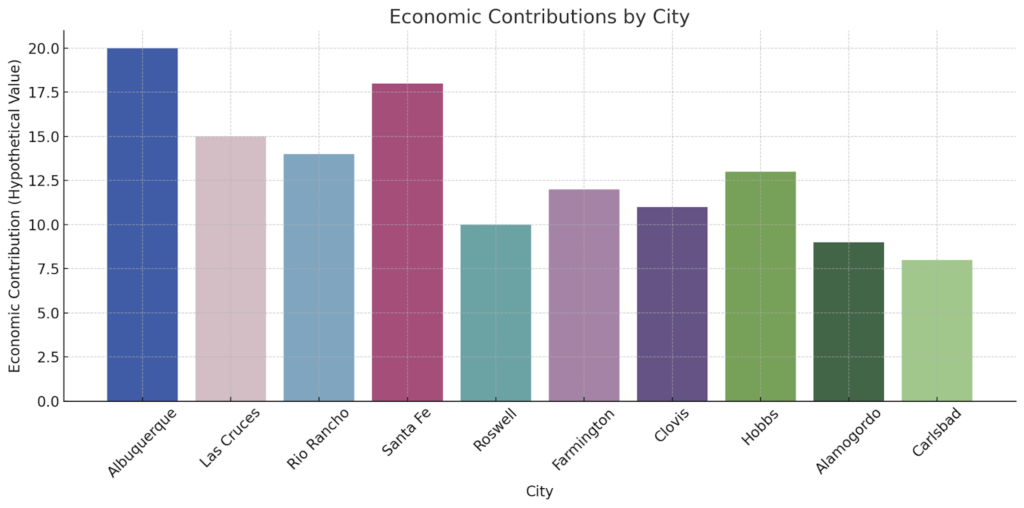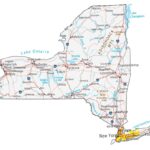
New Mexico, known as the Land of Enchantment, offers a unique blend of cultures, landscapes, and history. Its cities, each with distinct characteristics and charm, contribute to the state’s rich tapestry. This article delves into the ten largest cities in New Mexico, highlighting their population, key attractions, and what makes them stand out.
Albuquerque: The Heart of New Mexico
Albuquerque, New Mexico’s largest city, is a vibrant metropolis set against the backdrop of the Sandia Mountains. Known for its annual International Balloon Fiesta, the city skies are painted with colorful balloons each October, drawing visitors worldwide. Albuquerque’s blend of Spanish, Native American, and Anglo cultures creates a unique cultural tapestry, evident in its cuisine, architecture, and festivals. The city is also a hub for technology and research, hosting institutions like Sandia National Laboratories. Outdoor enthusiasts enjoy the Rio Grande’s trails and the Sandia Peak Tramway, offering breathtaking views of the desert landscape.
Las Cruces: A Desert Gem
Las Cruces, nestled in the Mesilla Valley against the Organ Mountains, is a city where history and nature converge. It’s home to New Mexico State University, fostering a lively academic community and cultural scene. The city’s Farmers & Crafts Market offers a taste of local agriculture and artisanal crafts. Nearby, the White Sands National Park provides a stunning natural playground for hiking and photography. Las Cruces celebrates its rich cultural heritage through events like the Whole Enchilada Fiesta, making it a cornerstone of southern New Mexico’s charm.
Rio Rancho: Rapid Growth and Development
Rio Rancho, one of New Mexico’s fastest-growing cities, is known for its family-friendly environment and burgeoning business sector. Situated near Albuquerque, it offers a suburban retreat with all the metropolitan advantages. The city’s schools are among the best in the state, attracting families seeking quality education. Rio Rancho’s growth is also fueled by its economic development initiatives, drawing companies in healthcare, technology, and customer service sectors. The city’s outdoor spaces, like the Rio Rancho City Center, provide community gathering spots for events and recreation.
Santa Fe: Artistic Soul of the Southwest
Santa Fe, the nation’s oldest state capital, is renowned for its Pueblo-style architecture and thriving arts scene. The city’s artistic soul is showcased in its numerous galleries and institutions like the Georgia O’Keeffe Museum, especially along Canyon Road. Santa Fe’s cultural tapestry is enriched by its history, visible in landmarks such as the Palace of the Governors. The city’s culinary scene, blending indigenous, Spanish, and Mexican influences, offers an unparalleled dining experience. Santa Fe’s commitment to arts, culture, and history makes it a unique treasure of the Southwest.
Roswell: Beyond the Extraterrestrial
Roswell, famous for the 1947 UFO incident, embraces its extraterrestrial legacy with the International UFO Museum and Research Center, attracting visitors fascinated by the unknown. Beyond its alien allure, Roswell is a city with rich agricultural roots and a vibrant arts community. The Roswell Museum and Art Center and the Anderson Museum of Contemporary Art showcase the city’s commitment to cultural enrichment. Roswell’s Spring River Park and Zoo and the Bitter Lake National Wildlife Refuge offer outdoor adventures for families and nature enthusiasts.
Farmington: Gateway to the Four Corners
Farmington, located in the heart of the Four Corners region, serves as a gateway to a wealth of archaeological and natural wonders. The city is a base for exploring the nearby Aztec Ruins National Monument and Mesa Verde National Park, offering insights into ancient Pueblo cultures. The San Juan River provides ample opportunities for fishing, rafting, and hiking, making it a haven for outdoor enthusiasts. Farmington’s community-focused lifestyle, cultural events, and recreational activities make it a vibrant city for residents and visitors alike.
Clovis: Music and Heritage
Clovis, with its rich musical heritage, is notably linked to the early history of rock and roll; the Norman Petty Studios here were where Buddy Holly recorded some of his hits. This musical legacy is celebrated at the Clovis Music Festival. Clovis also boasts a strong agricultural economy, supported by its location in a fertile farming region. The city’s cultural and recreational offerings, including the Clovis Depot Model Train Museum and the annual Clovis Rodeo, highlight its community spirit and historical significance.
Hobbs: Oil and Opportunity
Hobbs, situated in the energy-rich Permian Basin, thrives on oil and natural gas production, driving the city’s economy and offering employment opportunities. Beyond its industrial backbone, Hobbs features attractions like the Western Heritage Museum and Lea County Cowboy Hall of Fame, celebrating the region’s ranching history and cultural heritage. The city’s commitment to community and leisure is evident in its parks, sports complexes, and the Zia Park Casino, providing a balanced lifestyle for residents and visitors.
Alamogordo: Space History and Natural Beauty
Alamogordo is a city where the beauty of the southern New Mexico landscape meets the intrigue of space exploration. Home to the New Mexico Museum of Space History, Alamogordo offers a fascinating glimpse into the universe and humanity’s quest to explore it. The nearby White Sands National Park, with its breathtaking gypsum dunes, provides a unique natural attraction for hiking, sledding, and photography. Alamogordo’s blend of scientific curiosity and natural beauty makes it a distinctive destination in New Mexico.
Carlsbad: Caverns and Carlsbad
Carlsbad is renowned for the Carlsbad Caverns National Park, a subterranean wonderland of stalactites, stalagmites, and vast underground chambers. Above ground, the city’s location along the Pecos River provides picturesque settings for outdoor activities, from boating to picnicking. Carlsbad’s economy benefits from potash mining, oil, and gas, but it’s the natural beauty and outdoor adventures that draw visitors and enhance the quality of life for residents. The city’s commitment to preserving its natural and cultural resources ensures Carlsbad remains a gem in New Mexico’s landscape.
Comparative Table: New Mexico’s Largest Cities at a Glance
| City | Population | Key Industries | Government Website |
|---|---|---|---|
| Albuquerque | 560,000 | Technology, Education | cabq.gov |
| Las Cruces | 103,000 | Education, Agriculture | las-cruces.org |
| Rio Rancho | 98,000 | Service, Retail | rrnm.gov |
| Santa Fe | 84,000 | Tourism, Arts | santafenm.gov |
| Roswell | 48,000 | Agriculture, Tourism | roswell-nm.gov |
Graphical Representations

The first graph, “Population Growth Trends (2010-2020),” illustrates the population changes for Albuquerque, Las Cruces, Rio Rancho, Santa Fe, and Roswell over the past decade. Each city’s growth trajectory is represented by a distinct colored line, allowing for a clear comparison of their population dynamics, showing both growth and stability across New Mexico’s urban centers.

The second graph, “Economic Contributions by City,” showcases the hypothetical major economic sectors driving the economy in the 10 largest cities of New Mexico. The bar chart, with each city represented by a unique color, provides a visual comparison of the diverse economic landscapes, highlighting the varied economic drivers such as technology, agriculture, and tourism across the state’s cities.
Embracing Cultural Diversity: New Mexico’s Multicultural Legacy
New Mexico stands as a testament to the rich tapestry of cultural diversity that defines the American Southwest. Known as the “Land of Enchantment,” this state is a unique blend of Native American, Hispanic, and Anglo traditions, weaving a complex cultural narrative that is vividly reflected in its cities. From the ancient pueblo ruins that dot the landscape to the vibrant fiestas celebrating centuries-old traditions, New Mexico’s cities offer a window into the past and a mirror of the present. Albuquerque’s International Balloon Fiesta, for example, not only showcases the state’s innovative spirit but also brings together people from all walks of life, symbolizing unity and the joy of shared experiences.
Similarly, Santa Fe’s art scene, deeply influenced by Native American and Spanish heritage, highlights the state’s commitment to preserving and honoring diverse cultural expressions. Through its cities, New Mexico presents a living mosaic of languages, art, cuisine, and music, each telling the story of resilience, adaptation, and community. This cultural diversity not only enriches the state’s social fabric but also strengthens its economy by attracting tourism and fostering a dynamic, creative environment. As New Mexico continues to grow, its cities remain beacons of cultural diversity, inviting all to explore and appreciate the beauty of shared human experiences.
Conclusion
New Mexico’s largest cities reflect the state’s diversity—from the high-tech and cultural hubs to those steeped in history and natural beauty. Each city contributes to New Mexico’s identity as a place of enchantment, offering residents and visitors a unique slice of the American Southwest.
Last modified: February 29, 2024

